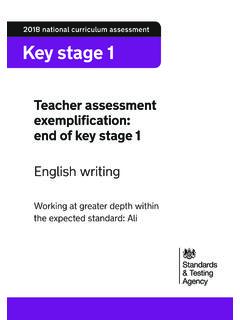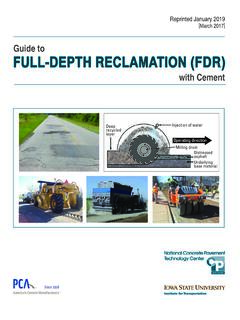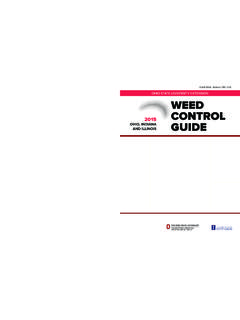Transcription of 2018 national curriculum assessment Key stage 2 - GOV.UK
1 2018 national curriculum assessmentKey stage 2 Teacher assessment exemplification: end of key stage 2 English writingWorking at greater depth within the expected standard: Frankie Page 2 of 35 Contents Guidance .. 3 Using exemplification materials .. 3 Using this writing exemplification .. 4 Key stage 2 English writing teacher assessment framework .. 5 Frankie: Working at greater depth within the expected standard .. 7 Frankie: annotations .. 8 Piece A: Short story .. 8 Piece B: Description .. 10 Piece C: Explanation.
2 12 Piece D: Newspaper report .. 15 Piece E: Diary .. 18 Piece F: Letter .. 21 Frankie: evidence check .. 23 Frankie: pupil scripts .. 24 Piece A: Short Story .. 24 Piece B: Description .. 25 Piece C: Explanation .. 27 Piece D: Newspaper report .. 29 Piece E: Diary .. 31 Piece F: Letter .. 34 Page 3 of 35 Guidance Using exemplification materials Exemplification materials provide examples of pupils work to support teachers in making judgements against the statutory teacher assessment frameworks at the end of the key stage .
3 If teachers are confident in their judgements, they do not need to refer to this document. Teachers should assess their pupils according to their school s own assessment policy, and use the statutory teacher assessment framework only to make a judgement at the end of the key stage . This judgement should be based on day-to-day evidence from the classroom which shows that a pupil has met the pupil can statements within the framework. Exemplification materials illustrate only how pupil can statements in the frameworks might be met.
4 They do not dictate a particular method of teaching, or the evidence expected from the classroom, which will vary from school to school. Teachers should not produce evidence specifically for the purpose of local authority moderation. However, a sample of evidence from the pupil s classroom work must support how they have reached their judgements. Local authorities may find it useful to refer to exemplification materials to support external moderation visits. The materials show what meeting the pupil can statements might look like.
5 Moderators should not expect or require teachers to provide specific evidence similar to the examples in this document. This document is part of a suite of materials that exemplifies the national standards for key stage 1 English writing teacher assessment . The full suite is available on Page 4 of 35 Using this writing exemplification This document contains a collection of work from a real year 6 pupil, Frankie (whose name has been changed), that meets the requirements for pupil can statements within the statutory teacher assessment framework for working at greater depth .
6 It shows teachers how they might judge whether a pupil has met the relevant standard. The collection consists of a sample of evidence (6 pieces) drawn from a wider range of the pupil s writing. Pieces have been selected specifically to exemplify the statements relevant to the greater depth within the expected standard at which Frankie is working. Teachers should base their teacher assessment judgement on a broader range of evidence than that shown in this document. Evidence will come from day-to-day work in the classroom and should include work from different curriculum subjects, although a pupil s work in English alone may produce the range and depth of evidence required.
7 Teachers can also use pupils answers to test questions as evidence to support their judgements. The evidence that teachers consider in English writing should be based on the pupil s independent work. The examples used in this document were produced independently, though the context for each piece explains where specific support was given (for example, certain vocabulary). Teachers should refer to STA s published teacher assessment guidance for further information on independent writing. Teachers can use their discretion to ensure that a particular weakness does not prevent an accurate judgement being made of the pupil s overall attainment in English writing.
8 A teacher should still assess a pupil against all of the pupil can statements within the standard at which they are judged, and a pupil s writing should meet all of the statements, as these represent the key elements of the national curriculum . However, a teacher s professional judgement takes precedence and this will vary according to each pupil. The frequency of evidence for pupil can statements may vary across individual pieces within a collection of a pupil s writing, depending on the nature of the statement and the writing.
9 For example, some evidence for the statement use verb tenses consistently and correctly throughout their writing would be expected in almost all writing, whereas this would not always be the case for integrate dialogue in narratives to convey character and advance the action . This document illustrates how the statements in the framework containing qualifiers ( some , many , most ) may be applied to a particular collection of work. Where qualifiers are used, they have consistent meaning: most indicates that the statement is generally met with only occasional errors; many indicates that the statement is met frequently but not yet consistently; and some indicates that the knowledge or skill is starting to be acquired and is demonstrated correctly on occasion, but is not yet consistent or frequent.
10 Page 5 of 35 Key stage 2 English writing teacher assessment framework Please also refer to the Teacher assessment frameworks at the end of key stage 2 on , as the guidance for using the frameworks has not been duplicated here. Working towards the expected standard The pupil can: write for a range of purposes use paragraphs to organise ideas in narratives, describe settings and characters in non-narrative writing, use simple devices to structure the writing and support the reader ( headings, sub-headings, bullet points)
















